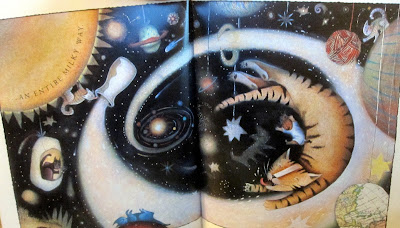Nancy, tell us a little bit about yourself.
I am a seamstress and costume designer. I do alterations and make custom clothing - mostly wedding and formal wear. I also design and make costumes for theatrical productions.
How would you define storytelling?
Storytelling to me is communicating a set of related ideas, thoughts, and feelings. Usually, but not always, there is a point to be made or something to be taught. The greatest storytellers are able to reach across time and cultures with tales that resonate with a wide variety of people, which is why so many filmmakers turn classics (take Les Miserables, for example) into blockbusters.
In what way do you use costumes and clothing to tell stories?
If I am working on a show, my job is to help the director portray his or her vision of the story. Costumes help define who the characters are and how they relate to each other. They might be rich or poor, attractive or ugly, self absorbed or clueless, etc. and I try to reinforce those qualities and relationships through their clothing. Color can be used to define someone's mood, attitude, and social status. Costumes can also be used to sort people into groups to make the story easier for the audience to follow. If I do my job well, you will feel like you know something a important about an actor the minute he walks onto the stage. Costuming is not usually a standalone form of storytelling, though it can be. How the actor wears and uses his costume is also important. For example, in 1905 men all wore hats. Does he wear it properly, toss it in the air, twist it in his hands? What the actor does with his hat takes you deeper into the story.
Could you look at one person and see a story in them, based solely on the clothes they were wearing?
I do that all the time. Sometimes I have the opportunity to find out if my surmises are correct, but more often I don't.
How do you approach the thought process of telling the story of a character through their clothes and appearance?
I start with the time period. I research both the era and the clothing. I educate myself on the social class and occupation of the character. Next, I consider what other details the script tells me about the person - any peculiarities, color or dress preferences, etc. and integrate them into the costuming as much as I can. I love to read old books and have found pop fiction from the time period I am working in to be very helpful, because it tells you things about everyday life that you wont pick up elsewhere.
What is your favourite thing about costuming?
My favorite thing about costuming is transforming a person from today into someone from another place and time. I feel really successful when an actor's mother fails to recognize her own child.
What is your favourite outfit/era? Why?
I can't pick just one, but in general I love the time period from 1880 to 1950, and I especially like the early 1900's and the 1940's. Fashions in these two eras were graceful and slightly formal without wild excesses of fabric (with the exception of the hats in the 1910-1919 era). Wartime shortages and rationing of fabric and buttons forced clothing designers in the 1940's to be really creative. The result was the development of some breathtaking designs. This is a favorite of mine from 1912:
...and this is a favorite of mine from the 1940's:
If you had to pick one element of costuming that has the most impact on telling a story, what would that element be and why?
If I had to pick one element of costuming that makes the most impact I would say it is what you don't see- the foundation under the costume. The undergarments of an era provide the shape the dress or suit sits on and plays a huge role in setting the time period. Something as simple as a man wearing suspenders under his suit coat with the pants cinched way up can make a huge difference in setting the time period. Ladies foundations run the gamut from nonexistent to incredibly complicated, and are capable of giving the same woman wildly different shapes. Compare these two dresses- the foundations are radically different:
Don't forget to check out Nancy's Facebook page and blog!

















































